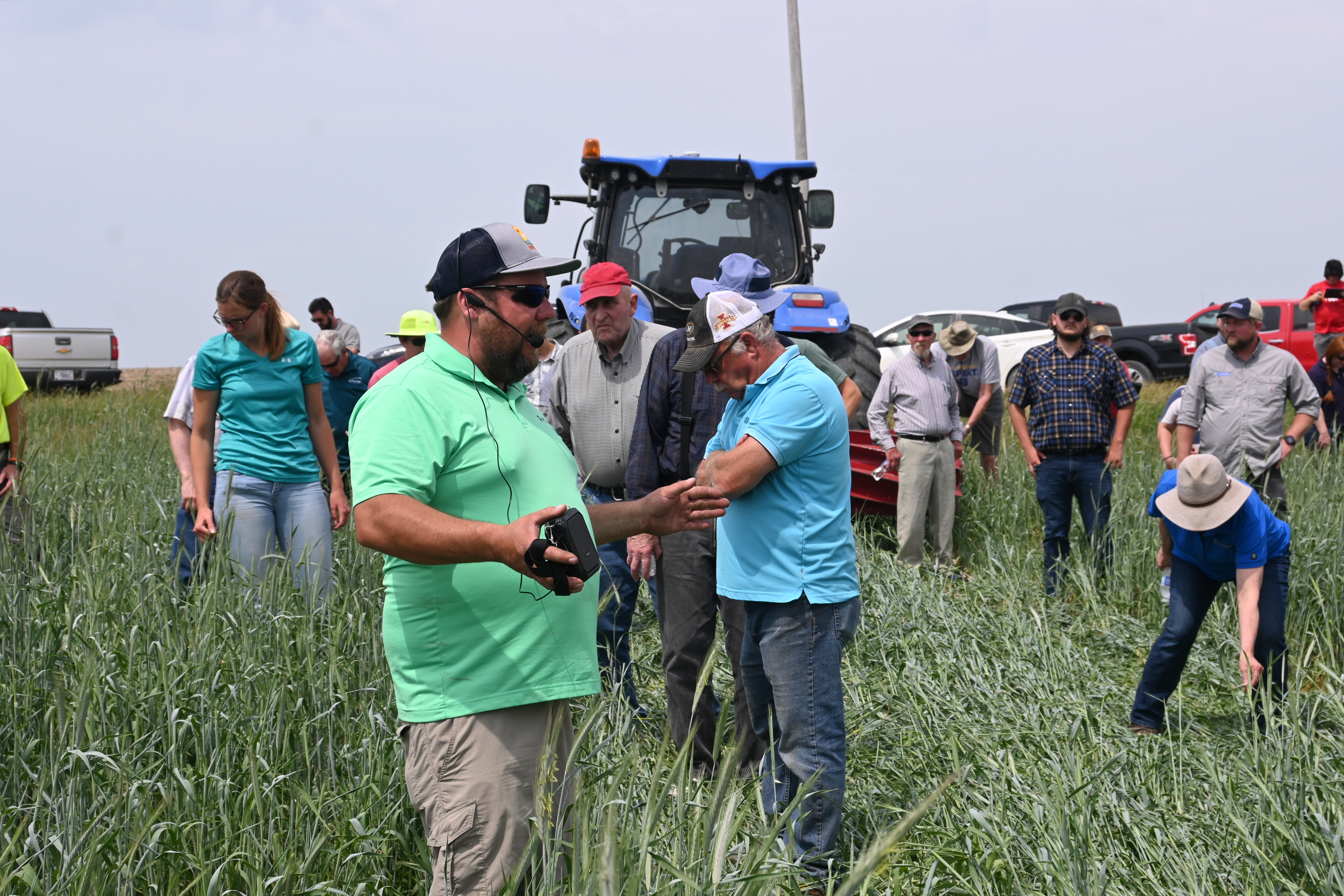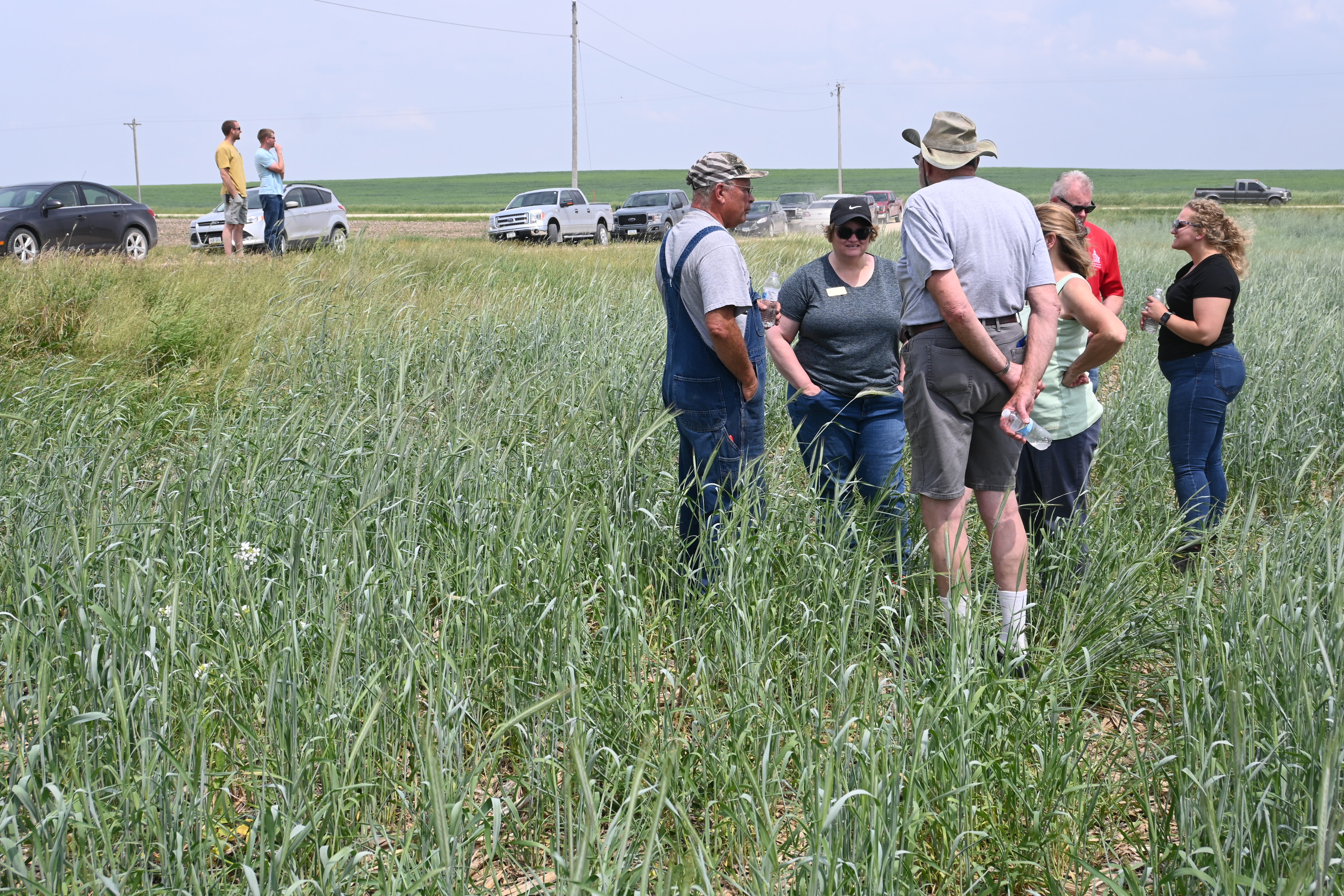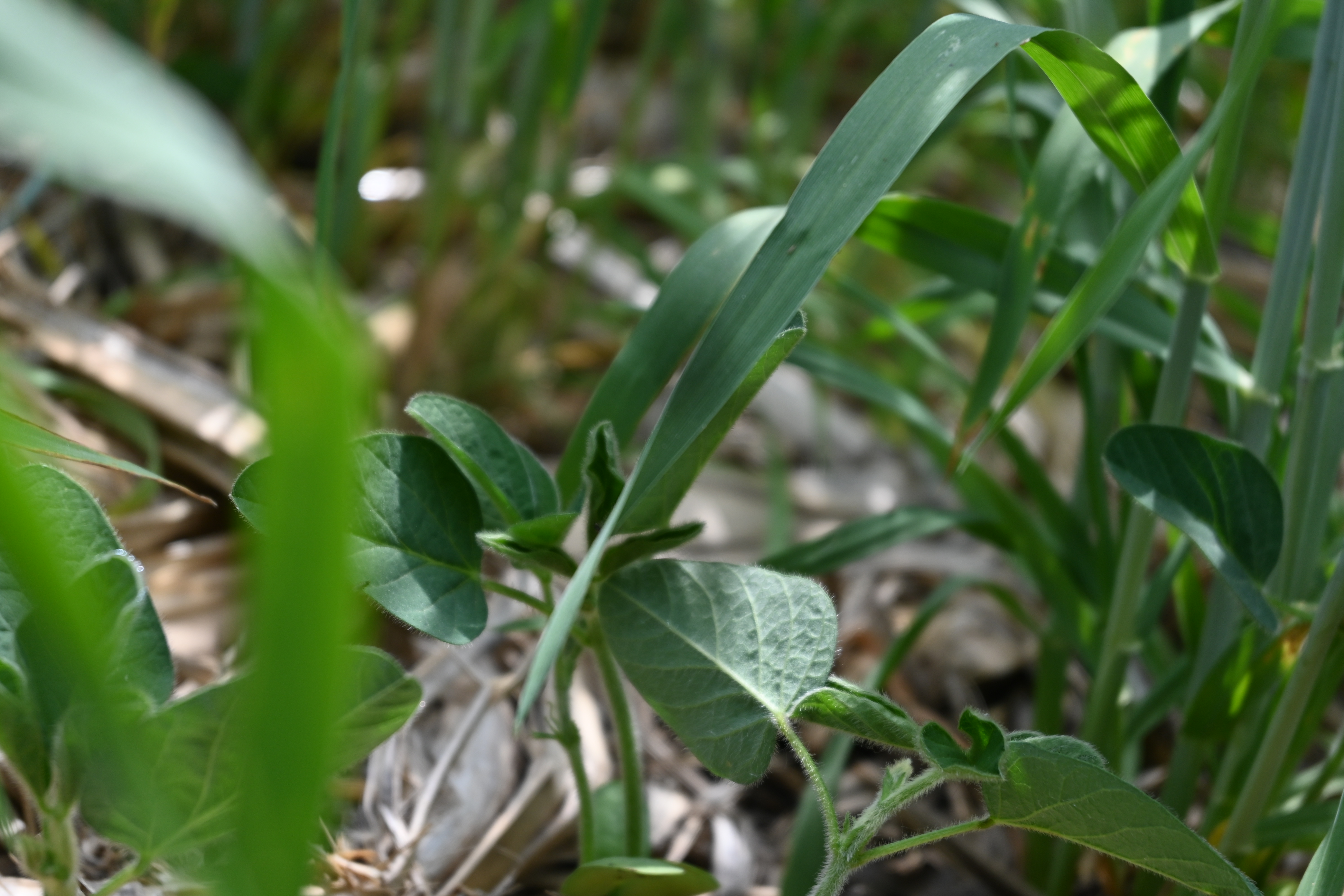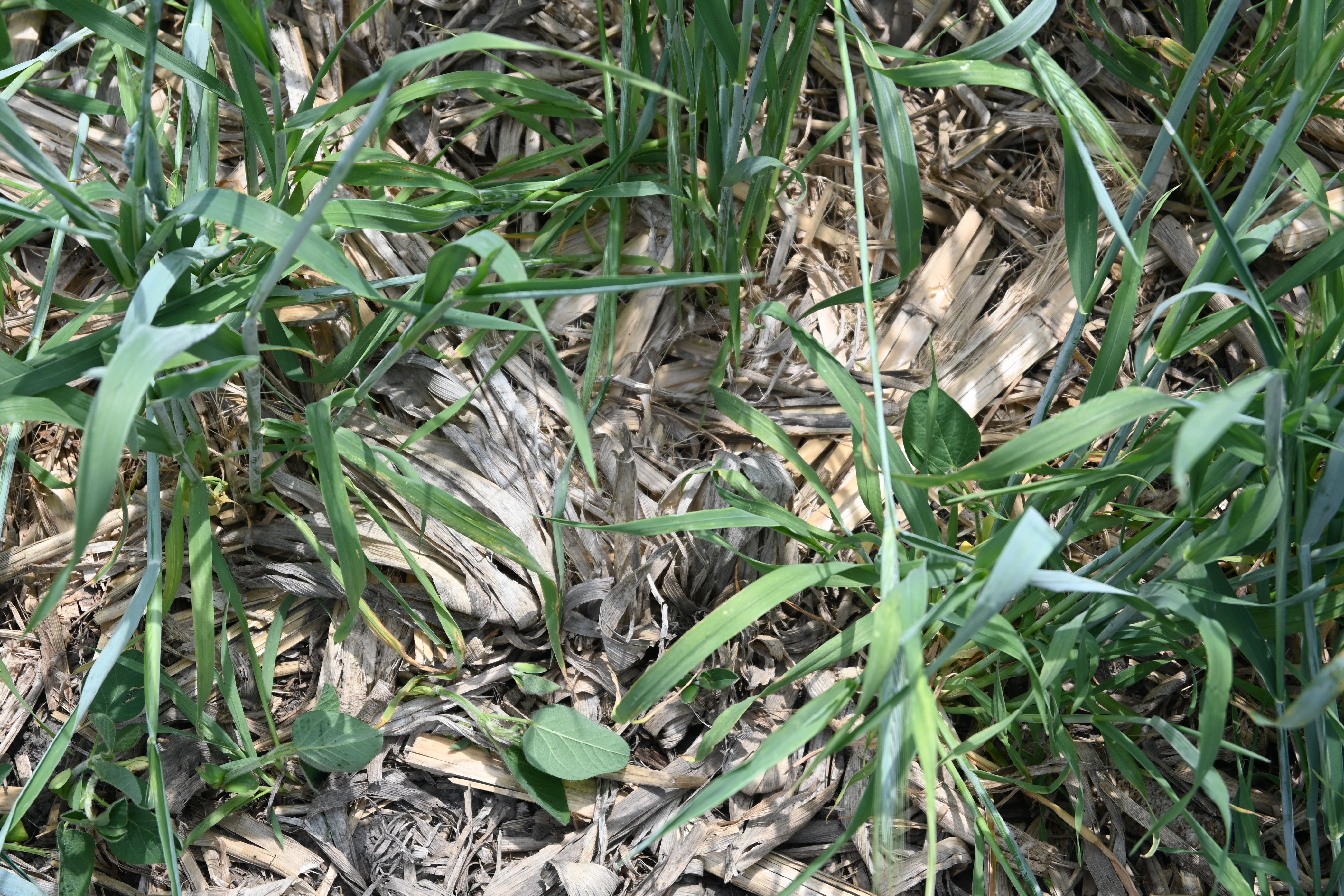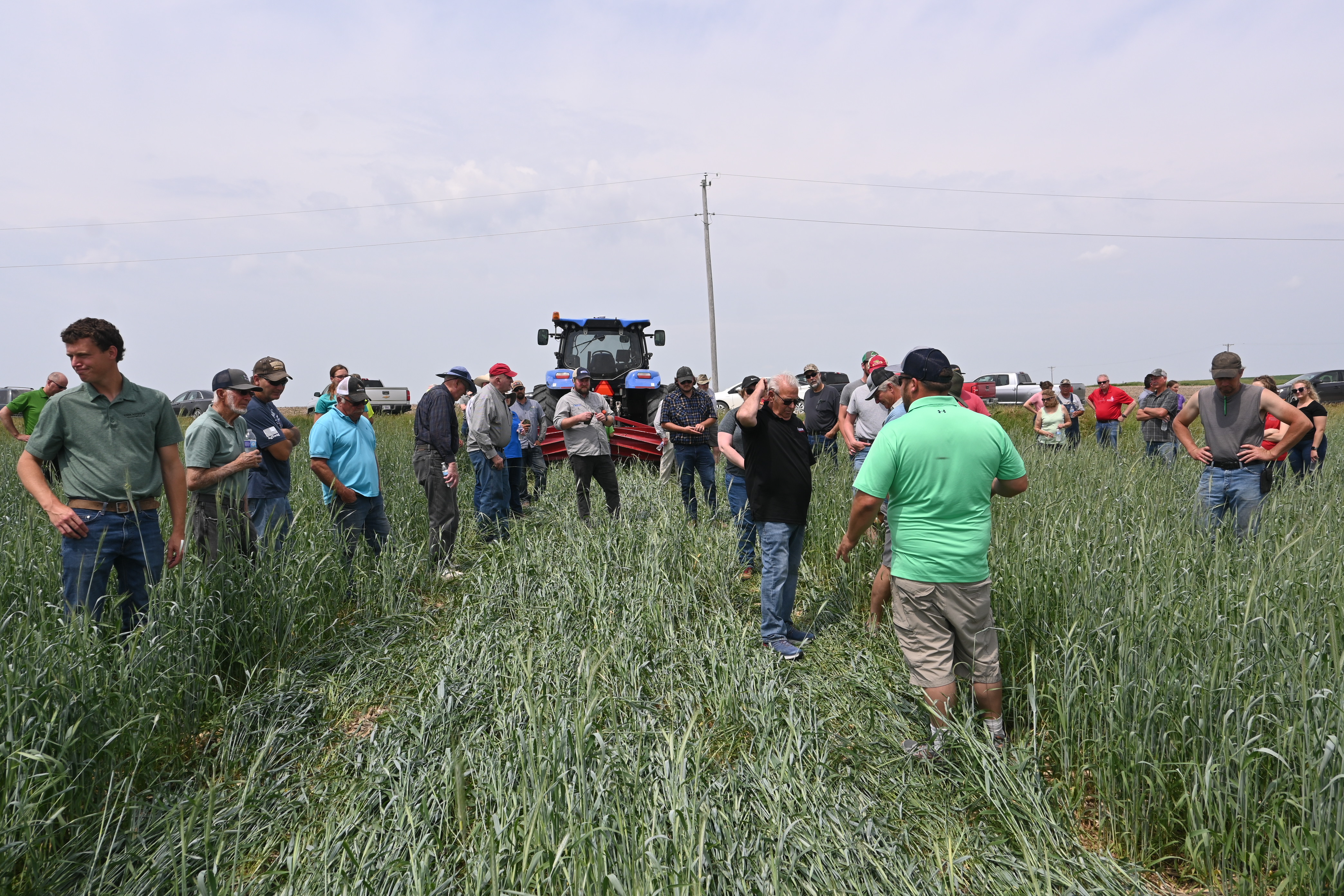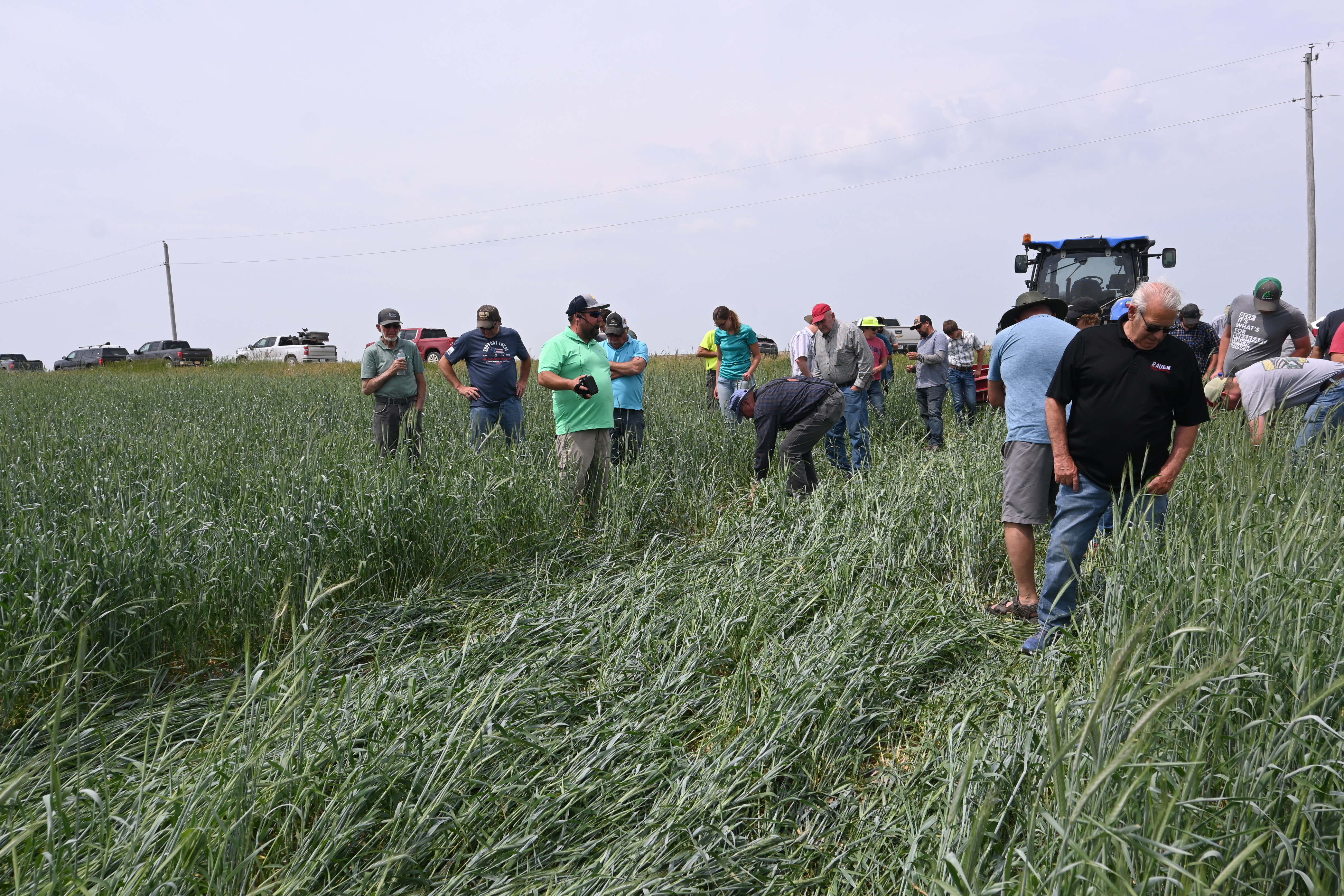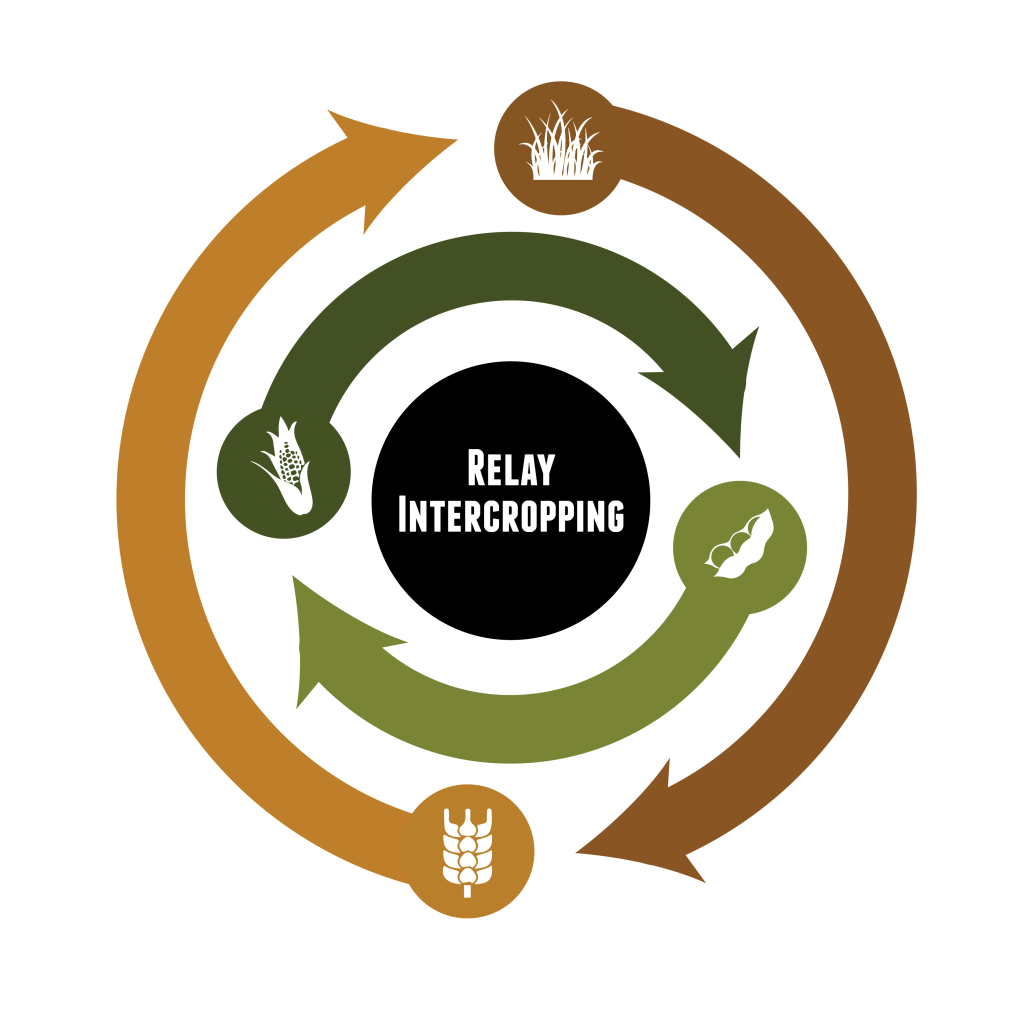
Last week over 65 people joined us for a relay intercropping field day hosted by Jason Russell on his farm near Monticello. Jason has been using cover crops on his farm for many years to help reduce erosion on sloping ground and increase organic matter. He has looked to relay cropping as a way to grow his own cover crop seed and improve overall profitability.
What is relay intercropping?
Following corn, winter wheat/rye is seeded, soybean is planted into winter wheat/rye, winter wheat/rye is harvested, soybean is harvested, and oats are planted as a fall cover crop ahead of corn. The relay intercropping system is designed to improve soil health and reduce nutrient losses while increasing productivity and profitability.
One of the benefits mentioned by all three field day presenters is the flexibility that relay intercropping offers. “There’s no wrong way to do relay intercropping,” noted Jason. This year, he drilled rye after corn harvest last fall and collected soil samples to apply recommended nutrients for crop production. With continued dry weather, Jason can take the rye to harvest or terminate it to ensure adequate soil moisture for the soybean crop planted in May. Jason’s soybeans are also eligible for full crop insurance coverage with a written agreement due to a recent Risk Management Agency update in December 2022.
Check out some photos from the field day below and subscribe for updates on our new Conservation Innovation Grant that is set to begin this fall exploring relay intercropping in Iowa!
